Nuremberg Fortress (Nuremberg Castle, German name: Nürnberger Burg), also known as Kaiserburg Castle (Kaiserburg Nürnberg) - the former residence of the rulers, which was one of the most important imperial fortifications of the Holy Roman Empire.
Today, the Nuremberg Fortress is a symbol and the main attraction of the city. It is a group of medieval fortified buildings and is considered one of the most formidable medieval fortifications in Europe, which personified the power and importance of the Holy Roman Empire, as well as the outstanding role of the imperial city of Nuremberg.
The Nuremberg Fortress is part of a tourist route through the city called the "Historical Mile of Nuremberg" (Historische Meile Nürnberg).
Museums are located in part of the fortress premises.
It is believed that the construction of the fortress dates back to the 11th or 12th centuries. However, historical and archaeological studies show traces of settlements founded on this site around 1000, from which it can be concluded that the castle was erected on the site of previous buildings.
However, the castle is not documented in sources until 1105, and the village of Norimberg was first mentioned as a royal estate with fortifications in 1050.
In the Middle Ages, the Roman-German emperors did not have a capital, but constantly moved from one of their castles to another. Thus, the fortress in Nuremberg was an important imperial castle, in which all the German kings and emperors stayed and temporarily lived during their reign (from 1050 to 1571).
During the Second World War, the castle was seriously damaged. In the post-war period, it was restored in its historical form.
Today Nuremberg Castle is a complex of buildings and defensive structures, most of which are located on a hill - a sandstone mountain, which was once a natural protective part of the castle.
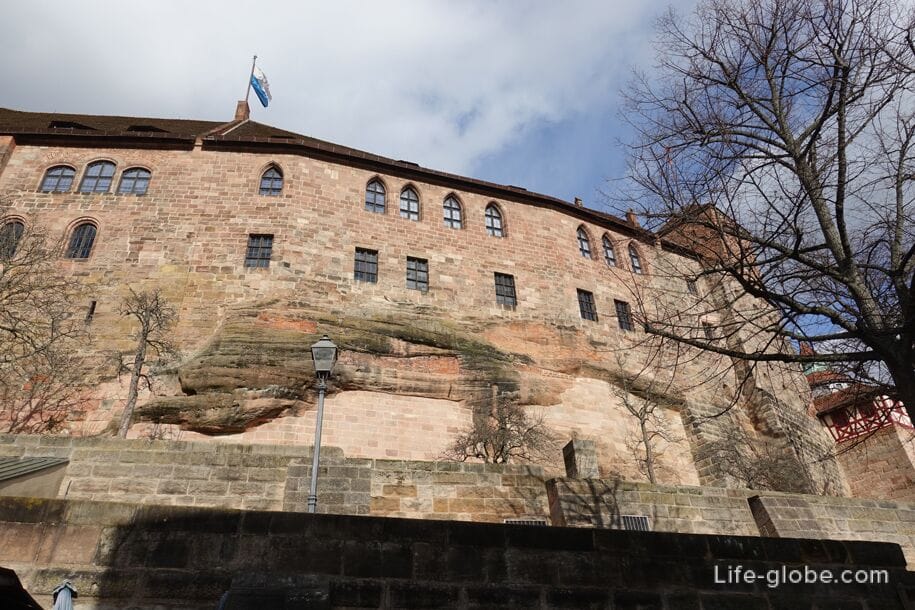
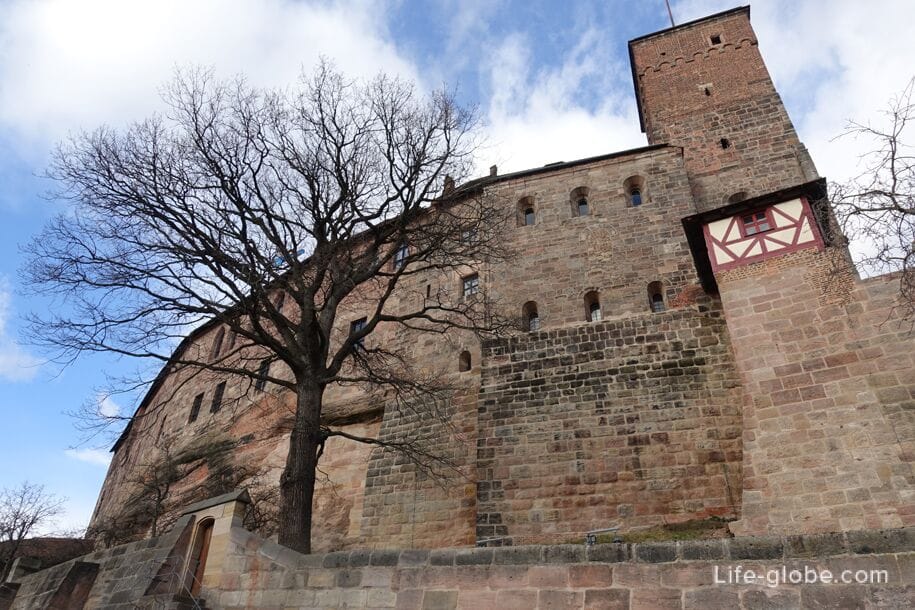
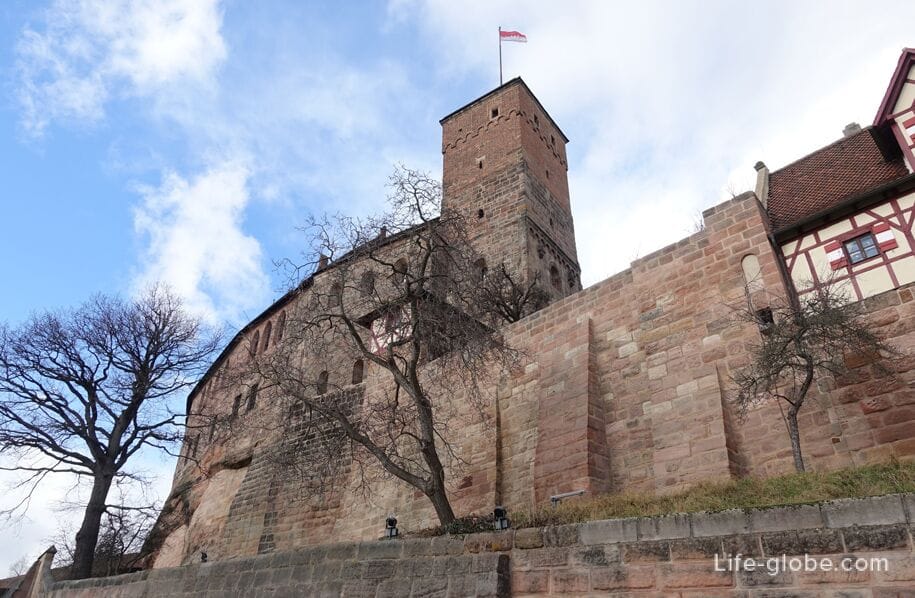
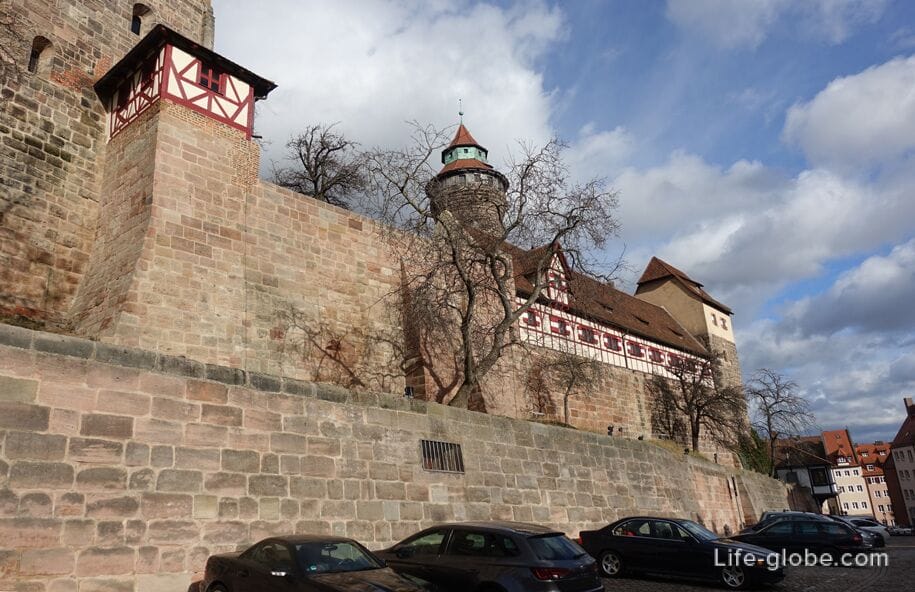
Nuremberg Castle consists of three main parts - the Burgrave Fortress, the Imperial Castle and the fortress of the free Imperial city, which are distinguished by three main periods of construction:
- Romanesque castle built under the Salian kings and Holy Roman Emperors (1027-1125);
- a new castle built in the Romanesque style under the Hohenstaufen emperors (1138-1254);
- reconstruction of the imperial castle, as well as various modifications and additions in the Gothic style of the late Middle Ages (14th-16th centuries).
Burgrave Fortress
The Burggrafenburg Fortress is the oldest part of the castle, which was originally an independent part of the castle, and today is located in the eastern part of the castle complex.
Most of the Burgrave Fortress was destroyed in 1420.
Objects of the Burgrave Fortress:
- Pentagonal tower (Fünfeckiger Turm), located at the entrance to the castle, near the imperial stables.
The tower rises above the northeastern part of the cliff and is one of the oldest buildings on the keystone. The lower part of the hewn stone tower could have been built in the 12th century. In later Gothic times, a brickwork floor was added.
The pentagonal tower is distinguished by a wooden bay window on the west side and a flat pyramidal roof.
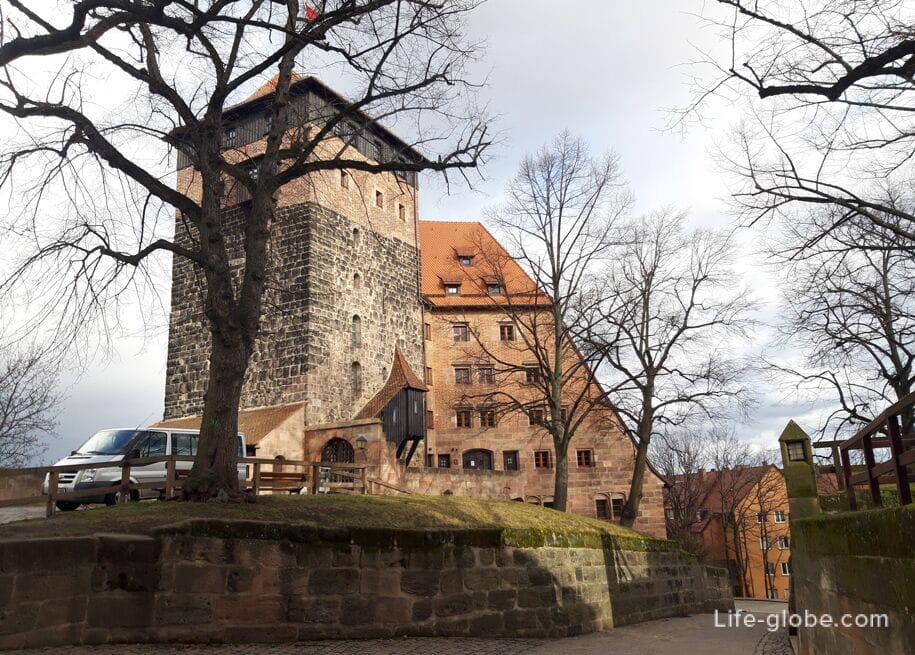

A wall runs from the tower in the western direction, from the platform near which there are views of the moat and part of the city of Nuremberg;


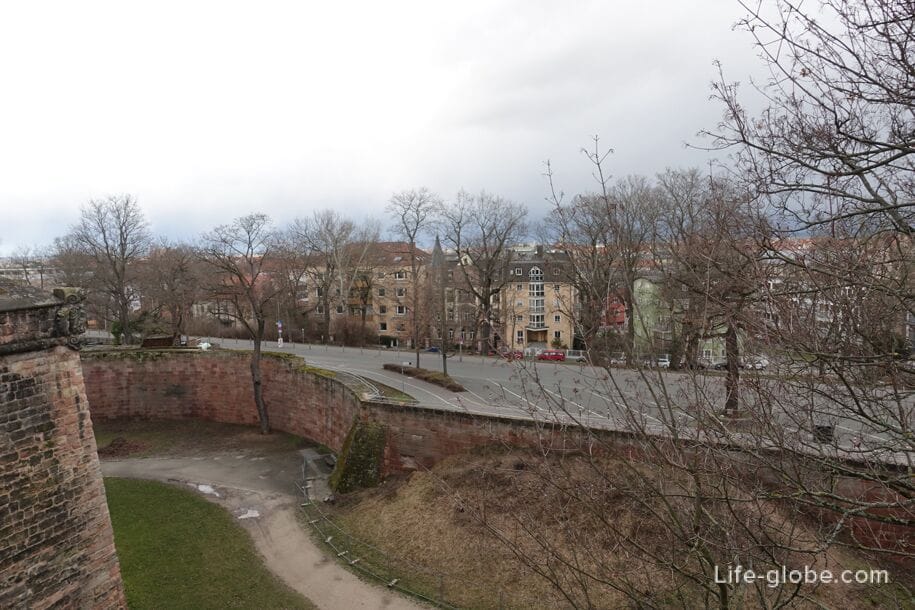
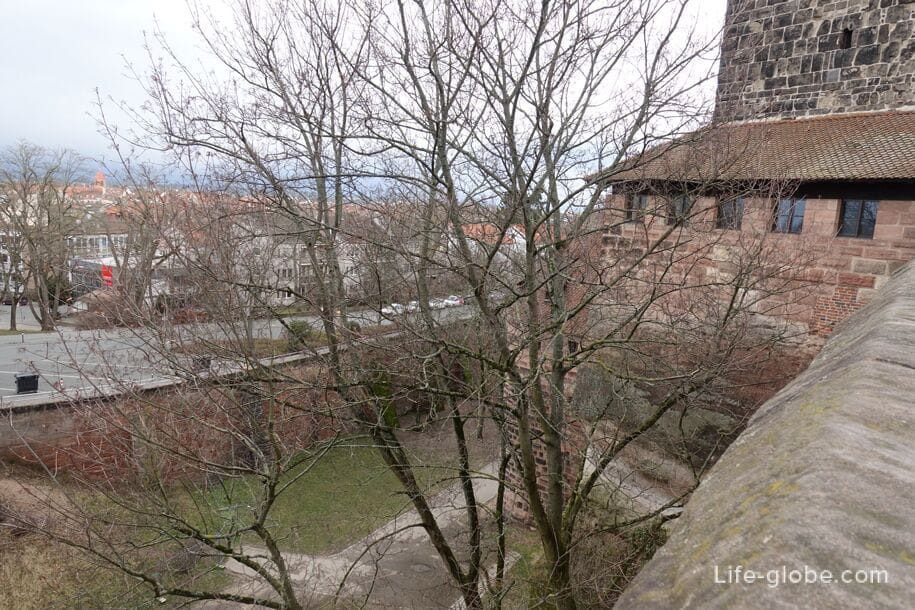
- west annex to the Burgrave house (Westlicher Anbau an das Burgamtmannshaus) - a three-storey residential building of the 14th-16th centuries with a gable roof and a rear bay window, with a semicircular tower in the west and a two-storey half-timbered extension;

- Chapel of St. Otmar and St. Walpurgia of Heidenheim (Burgkapelle St. Walburgis), also known as Walpurgis Chapel (Walpurgiskapelle).
The choir tower church has a fortified tower, a sandstone stone structure with a gable roof, a turret with a bell. The first floor of the tower is in Romanesque style (mentioned in 1267-1268), otherwise the building belongs more to the 15th century.
View of the chapel - on the left, the adjacent wall of the castle and the arched passages to the courtyard of the Burgrave fortress
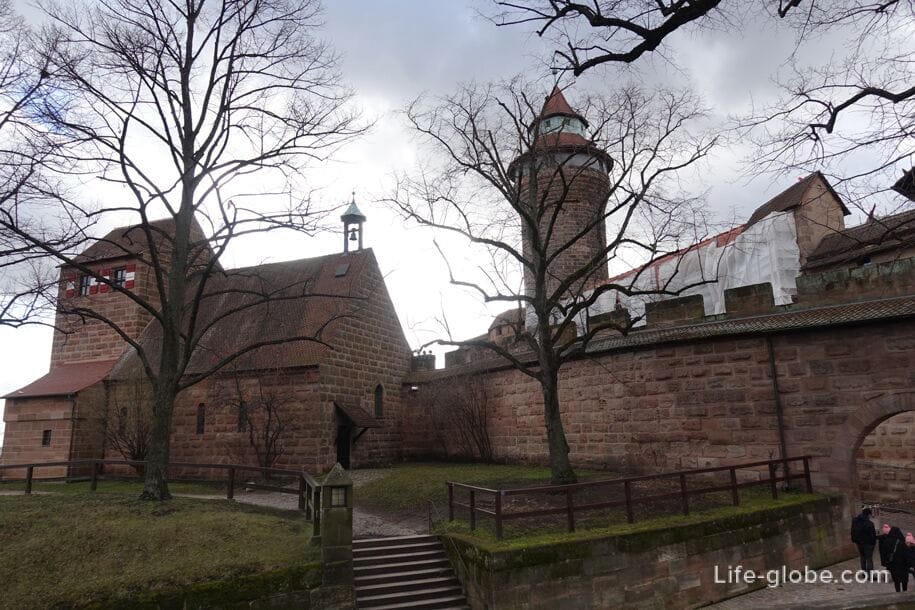
- in the courtyard of the Burgrave Fortress, near the southern defensive wall, there is a spacious observation deck with panoramic views of the old city of Nuremberg.
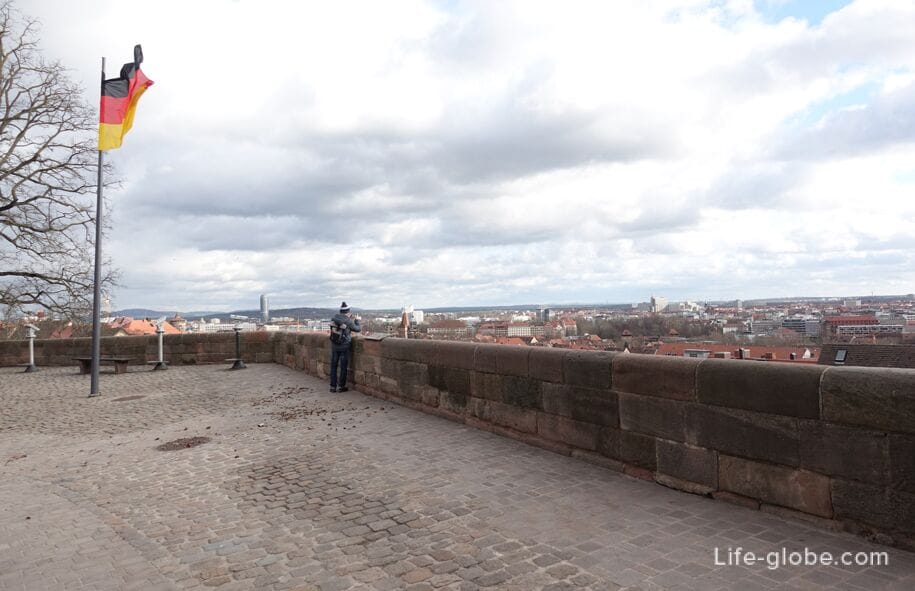


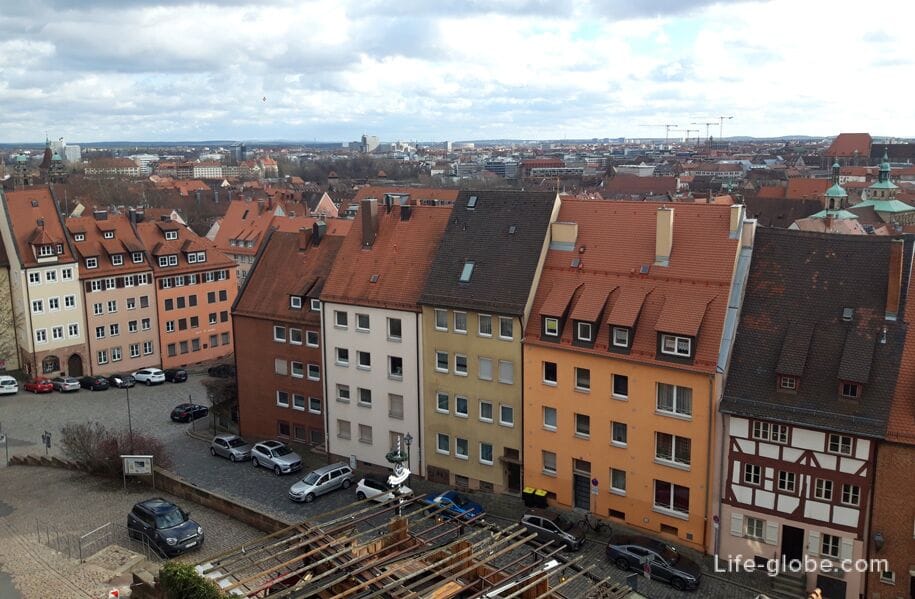

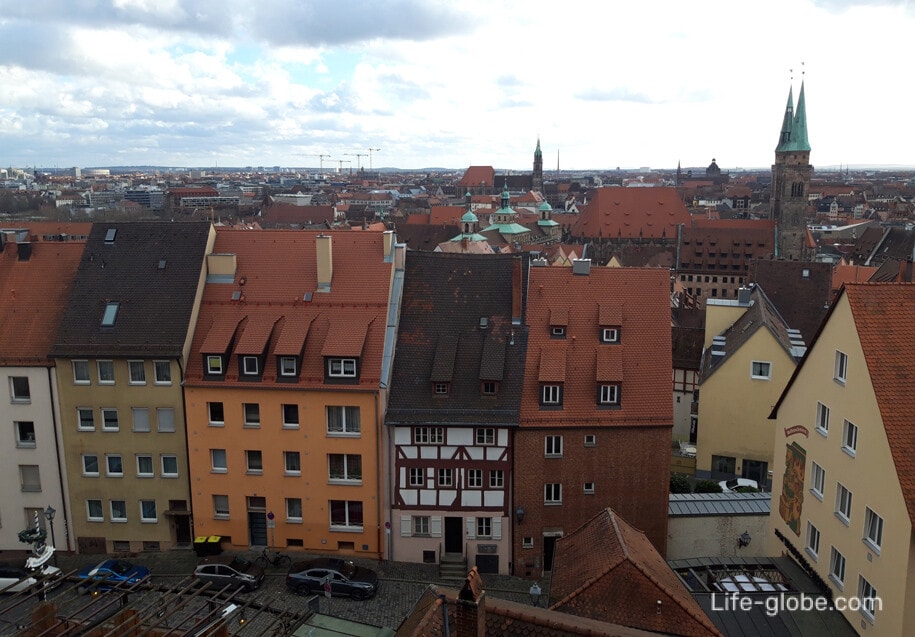

View of the wall of the Burgrave Fortress

Imperial Castle
The Imperial Castle or Imperial Fortress (Kaiserburg / Kaiserburg), from which the entire castle complex got its name, was built from 1138 to the west of the Burgrave Fortress and included the imperial palace.
The inner courtyard of the Burgrave Fortress is separated from the Imperial Castle by a wall of stone and brick with battlements and entrance gates - the former border between the castles.
Just behind the wall is the tall Sinwell Tower (Sinwellturm), which was used as a watchtower. The construction of the tower dates back to the second half of the 13th century.
The current entrance through an extension to the north of the tower, as well as an internal wooden staircase leading to the platform, probably date from the 18th or 19th century.
The tower is equipped with a polygonal tent roof with a pointed mount for the spire. There is an observation deck at the top of the tower (the ascent is paid). In addition, the tower has an exhibition with photographs of the destruction of the castle and the city during the Second World War.
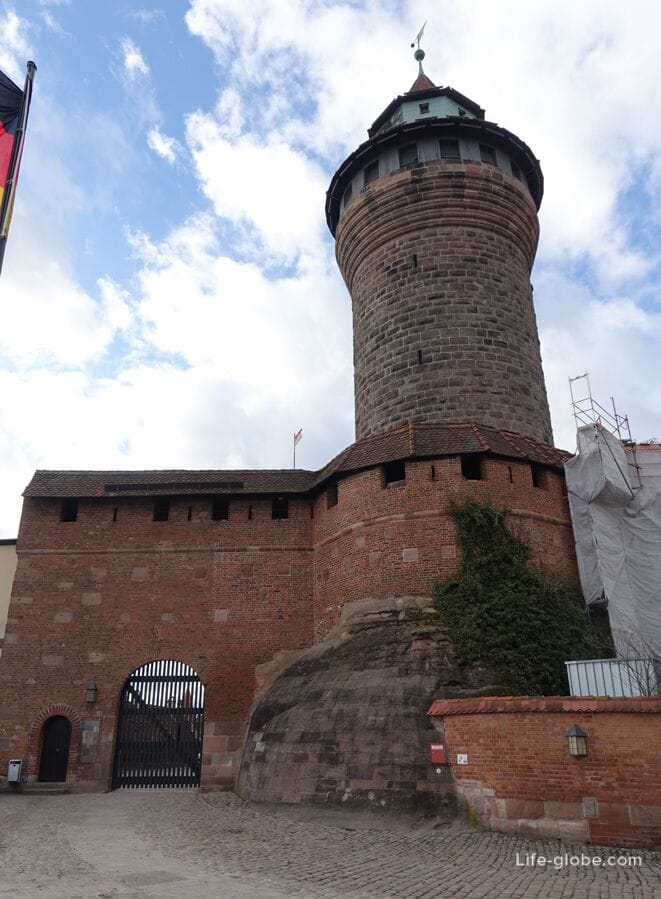
The Imperial Castle complex also includes:
- Hasenburg - a residential building and a watchtower of the 12th century.
The structure has a Gothic upper floor of plastered brickwork with a half-hipped roof. The gates in the fortress wall date from the second half of the 14th century and separate the Imperial Castle from the Burgrave Fortress.
In the photo, Heisenburg with a gate is on the left; the fortress wall; the Sinwell Tower is visible on the right behind the wall
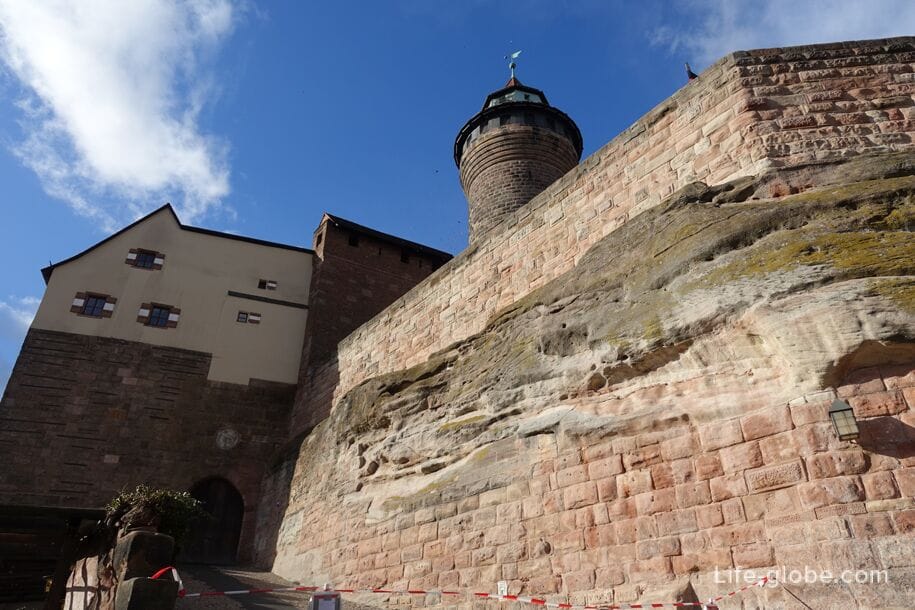
- double imperial chapel (Burgkapelle / Bergkapelle) in Romanesque style, built in the 1200s.
The double chapel consists of two chapels, one above the other and connected only through a hole in the ceiling, which represents the hierarchical levels of medieval society - the lower tier was intended for knights and retinue; the middle tier, located on the same level with the base of the stone crucifix, was intended for the king and his inner circle; and the balcony, located on the wall opposite the altar, just below the level of the head of Christ on the crucifixion, only for the emperor.
You can visit the chapel for a fee.
Photo of the upper chapel with access to the lower chapel
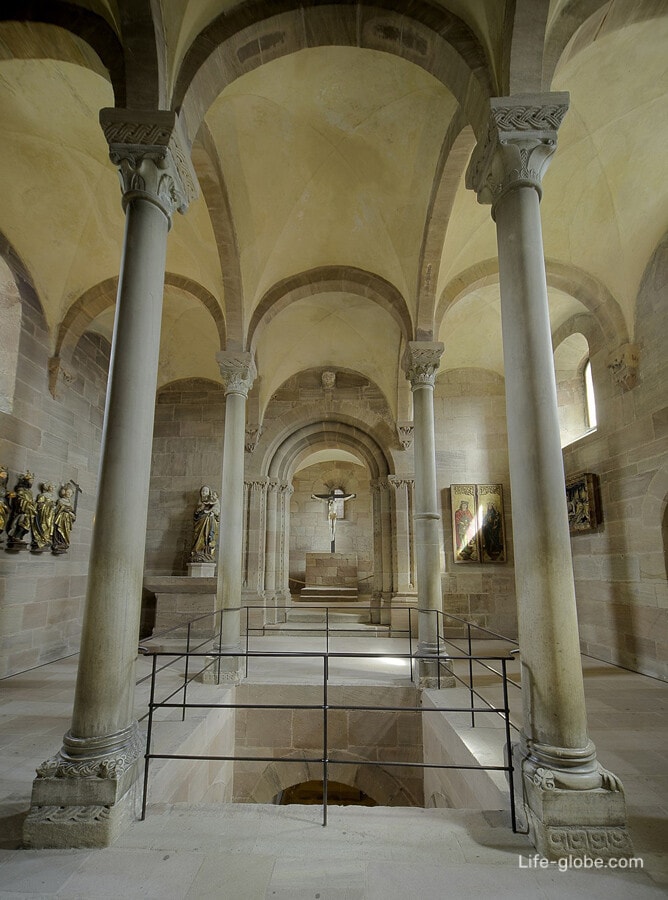
Photo of the lower chapel
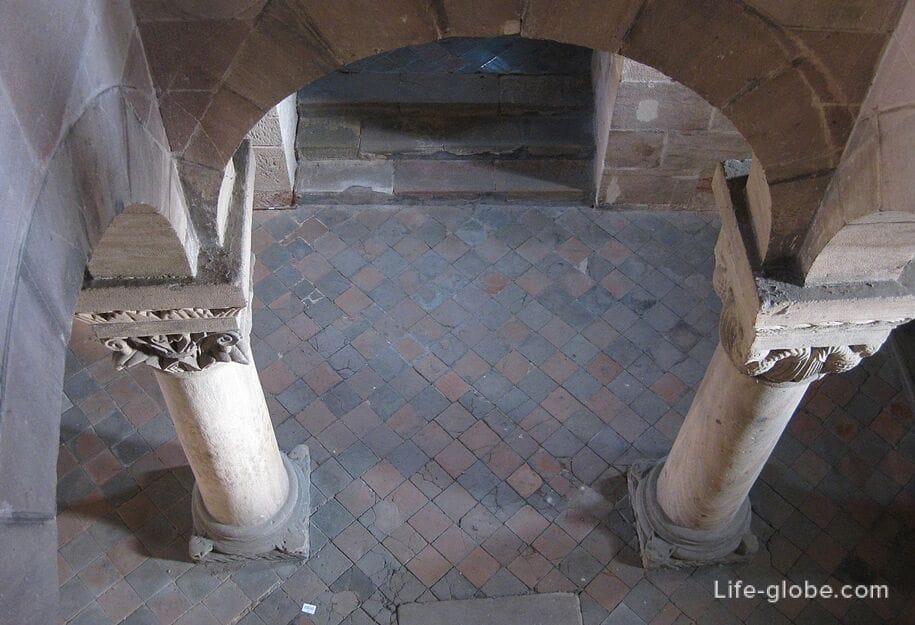
Adjacent to the chapel is the Pagan Tower (Heidenturm), which was built at the same time as the chapel. When the castle was restored for the visit of Emperor Charles V, the pagan idols and images on the tower were removed.
To the right (north) of the tower and the imperial chapel are two adjacent buildings:
- The extension of the eastern bathhouse (Östlicher Badstuben-Anbau) is a sandstone block structure with a curved roof, designated "1564";
- a deep well (Tiefer Brunnen), carved into the rock and located under a small superstructure.
The depth of the well is somewhere 47-53 meters. The trunk of the well probably dates back to the 12th century, and the upper brick lining dates back to the 16th century. The building above the well with a sandstone ground floor, a half-timbered upper floor and a gable roof has the inscription "1563". Inspection of the well is paid.
View of the courtyard of the Imperial Castle: on the left - the pagan tower, behind it - a double chapel; on the right - the extension of the bathhouse, behind it - a deep well;
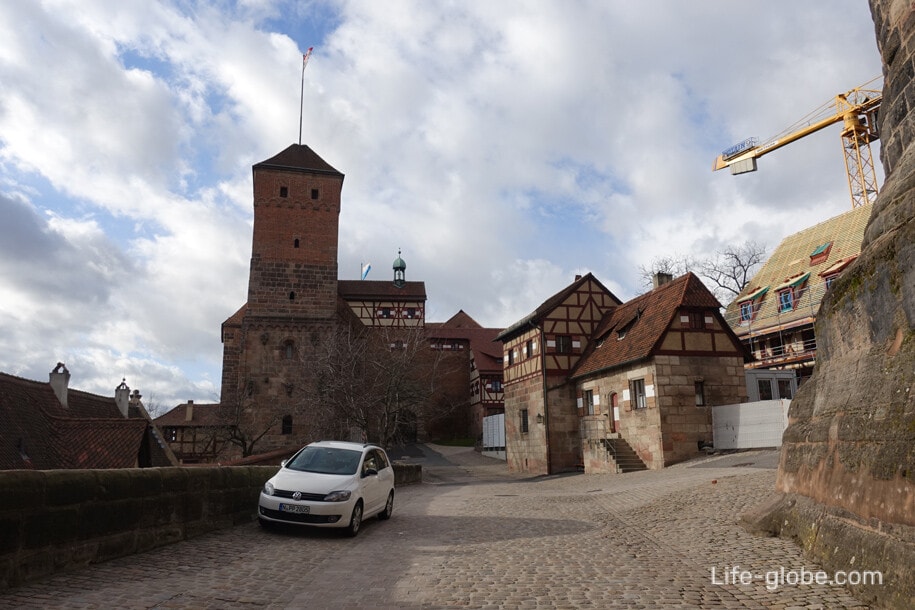
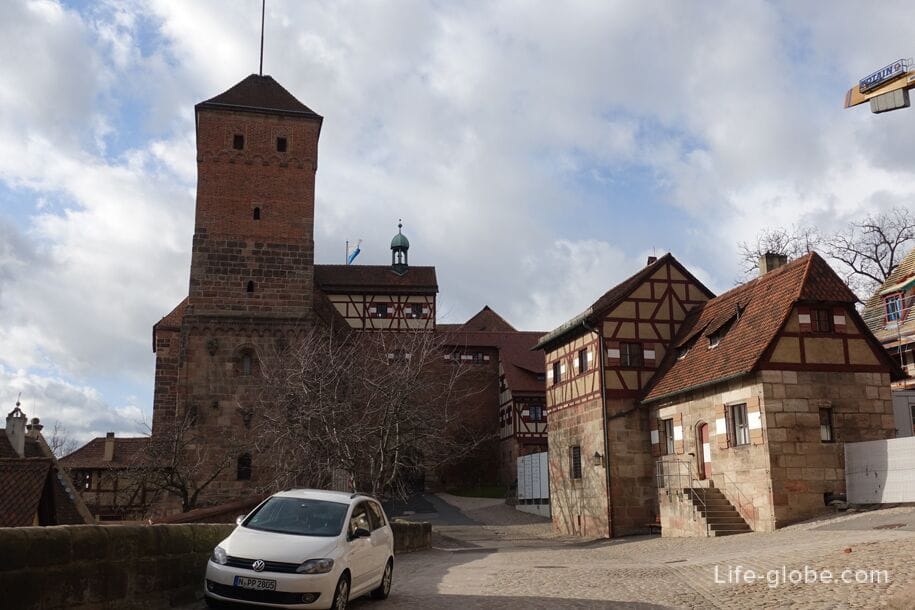
- "Heavenly Stable" (Himmelsstallung) - a half-timbered house with a sandstone basement and dormer windows on both sides (15th-16th centuries).
The building is built into the southern defensive wall.
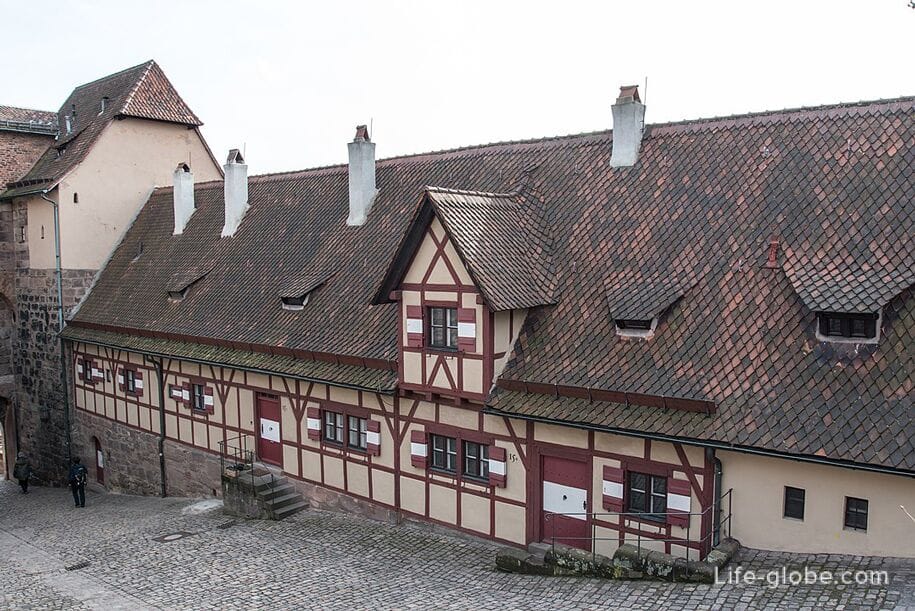
View of the "Heavenly Stable" and the southern defensive wall
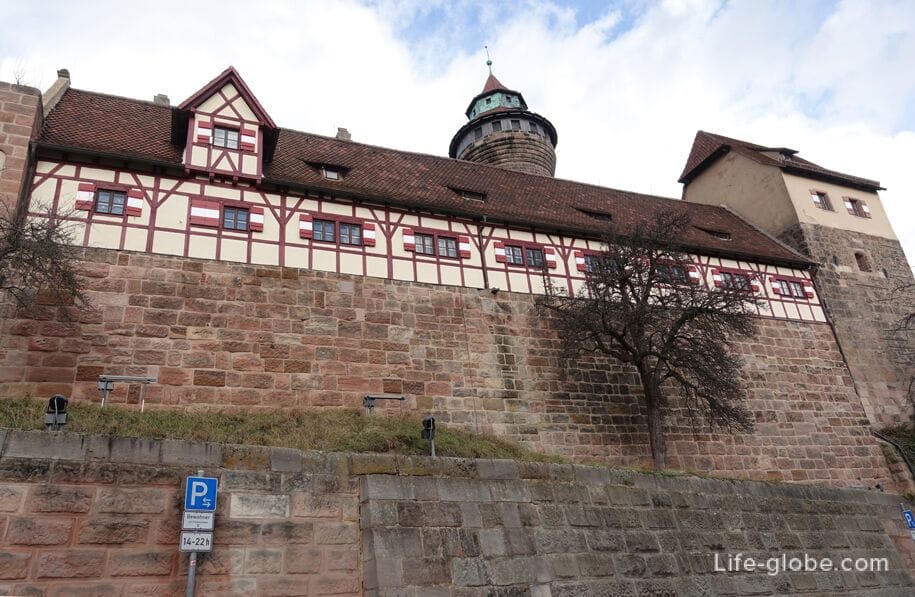
- "Financial House" (Finanzstadel) is a one-story sandstone building with a gable roof, built in 1564 on the site of the imperial stables of 1488;
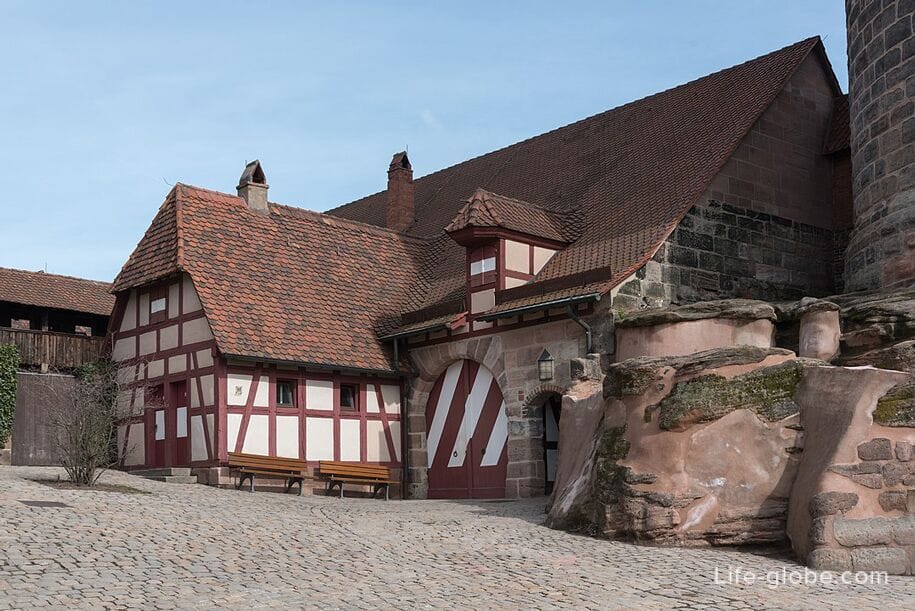
- the secretariat building (Sekretariatsgebäude) is a two-storey building with a half-hipped roof and dormer windows. The eastern half-timbered part probably dates back to about 1487, the western part with a sandstone basement has a mark of "1564".
The building is located along the northern defensive wall.
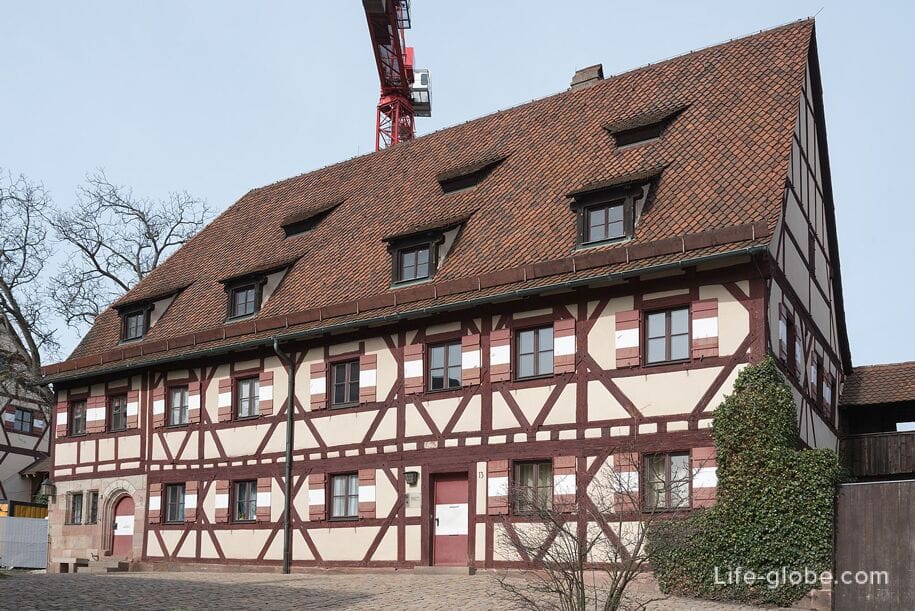
View of the northern defensive wall
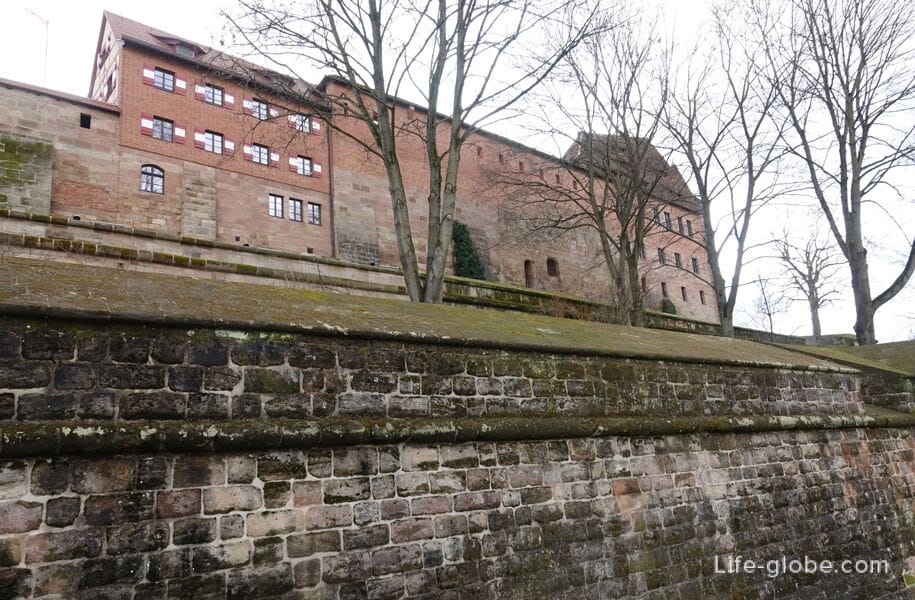
- The Imperial Palace (Palas) is the main building of the Imperial Castle, which is a two-story elongated sandstone building with a gable mansard roof, a wooden portico and an entrance hall from the courtyard side, built under Emperor Frederick III after 1440-1442 using the main walls of a two-story previous building in the late Romanesque style, probably built in 1200.
The palace was expanded to the west in 1487 and 1559-1660.
As a result, the palace was supplemented with a four-story sandstone and brick building with a hipped roof and a western tower with a pointed helmet. The four-storey building is called the Kemenate of the Imperial Castle (Kemenate der Kaiserburg).
The palace has an inner courtyard.
Today there is a museum in the former halls and chambers of the Imperial Palace, whose collections are devoted to the history of the castle and its military aspects.
The Palace Museum is a branch The German National Museum in Nuremberg (Germanisches Nationalmuseum). You can visit the museum for a fee.

Gardens of the Imperial Castle
In the course of the history of the development of the Imperial Castle in Nuremberg, reports were made about many gardens that no longer survive.
During the reign of Emperor Frederick III (1440-1493), "hanging gardens" were laid out on the southern side of the palace.
Between 1538 and 1545, bastions were built on the northern and western sides of the castle, on which the castle garden was later laid out, which still exists today is the Castle Garden of the Imperial Palace (Burggarten der Kaiserburg / Berggarten).
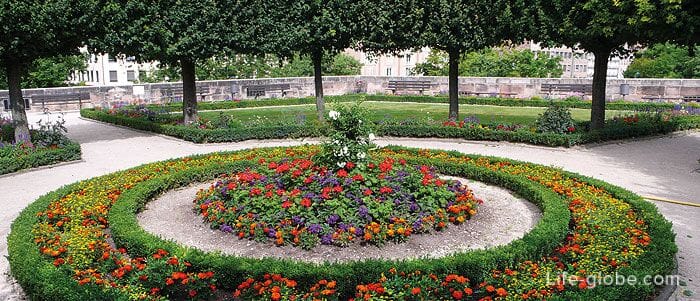
On the south side of the Nuremberg Fortress, between the tower of the Pagans (Heidenturm) and the "Heavenly Stable" (Himmelsstallung), in the courtyard there is a small garden of Maria Sibylla Merian (Maria Sibylla Merian-Garten / Marian-Garten).
The garden is located right next to the castle wall and offers wonderful panoramic views of the old town of Nuremberg.
The garden is named after the famous artist and naturalist Maria Sibylla Merian (1647-1717), who lived and worked in Nuremberg for 14 years. She is one of the outstanding personalities of the 17th-early 18th centuries. Her house was in close proximity to the Imperial Castle, and she could use this small garden to study flowers and insects.
Today, the plants in the garden are borrowed from the books of Maria Sibylla Merian and her drawings. In the garden you can even find tropical plants from her travel notes on South America.
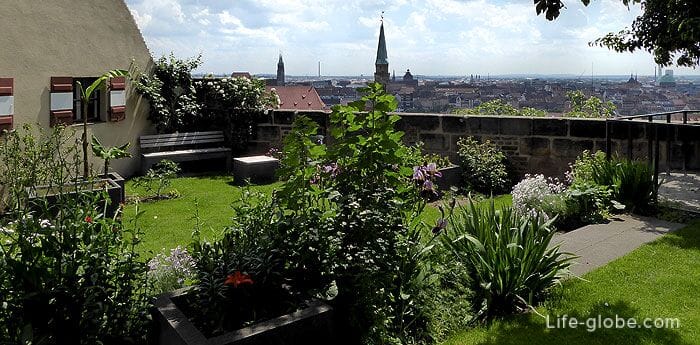
Entrance to the gardens of Nuremberg Castle is free (free).
Buildings of the Imperial City
The so-called "Buildings of the Imperial City" (Reichsstädtische Gebäude) are various modifications and additions to the Nuremberg Fortress, which were erected in the 14th and 16th centuries.
They include:
- the so-called Imperial Stables (Kaiserstallung) - the former building of the imperial city, located on the north side of the fortress, near the Pentagonal Tower.
The three-story sandstone block structure with a high six-story gable roof with dormers, was built in 1494-1495 by Hans Beheim the Elder as a stable and granary.
On the south wall of the stable, near the arched portal, there is a relief coat of arms of Nuremberg, created by Adam Kraft.
Today, in the walls of the former Imperial stables, the Jugendherberge Nürnberg Hostel is located with a modern interior, free Wi-Fi, luggage storage, a conference room, family rooms, a 24-hour bar and a reception desk.
Breakfast is included in the price. Link to the hostel
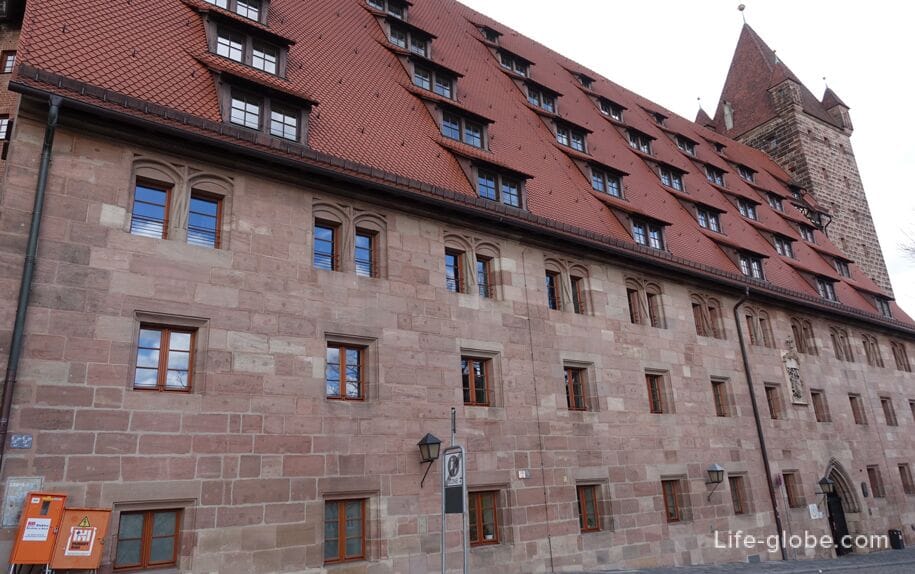
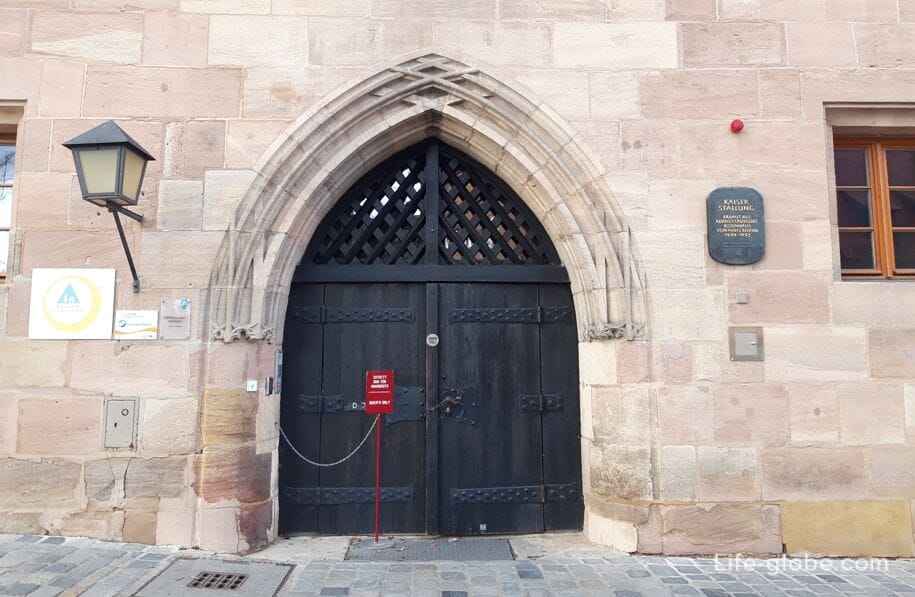

Adjacent to the stable on the north side is a polygonal extension in the form of a tower with a helmet roof - the Luginsland Tower (Turm Luginsland), which was built in 1377 as a watchtower of the city fortifications and the castle itself. There are four watchtowers at the top of the tower.

The Imperial Stables are in the center, the Luginsland Tower is on the right and the Pentagonal Tower is on the left
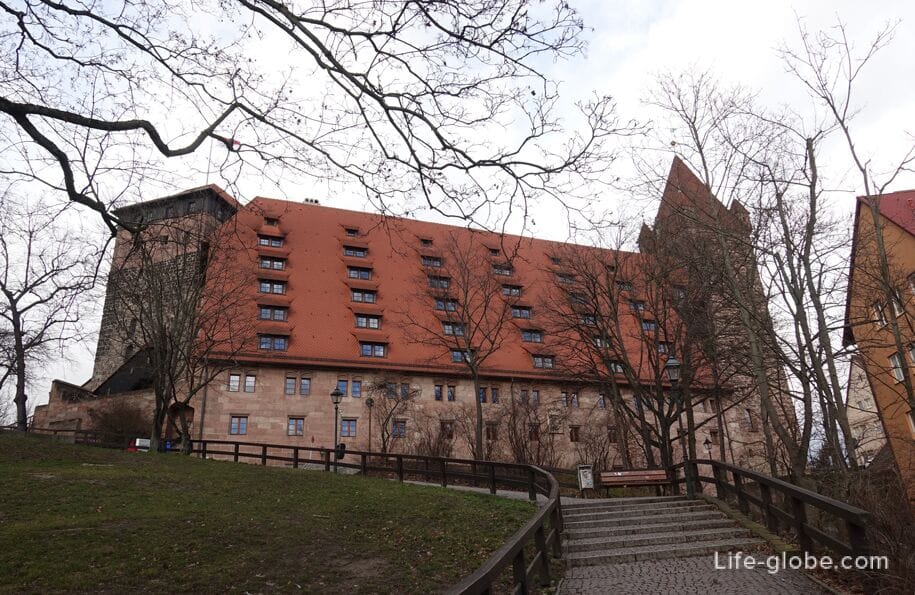
- Bastion Vestner (Vestnertorbastei), Vestnertor (Vestnertor) and the Vestnertor Bridge (Vestnertorbrücke), built in the first half of the 15th century and located on the north side of the castle;
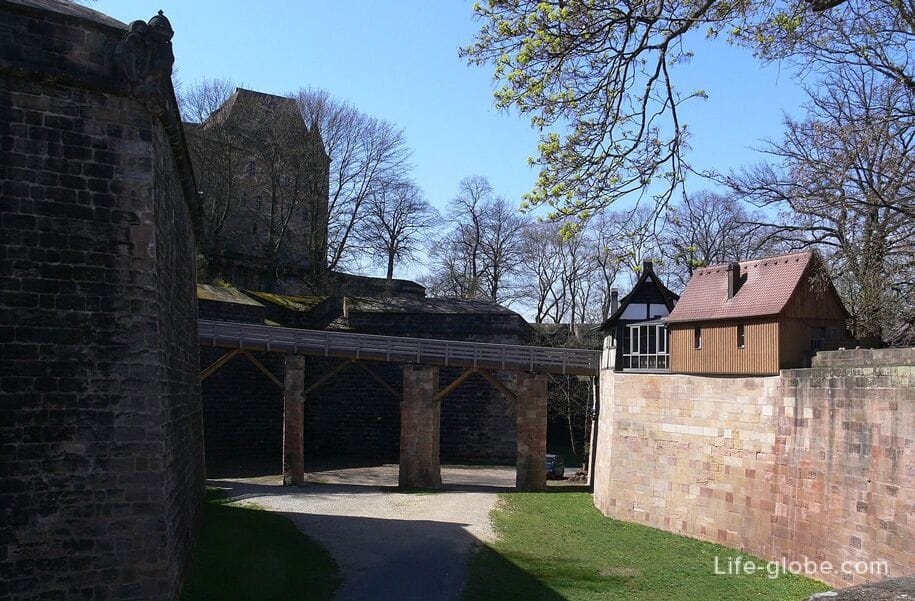
- the bastion of the Great Castles (Grosse Burgbasteien), consisting of the Lower Bastion (Untere Bastei) and the Upper Bastion (Obere Bastei).
The polygonal sandstone masonry structure with rounded parapets and wide gun loops dates from 1538-1545.
A moat was made in front of the bastions of the last city fortifications of Nuremberg.
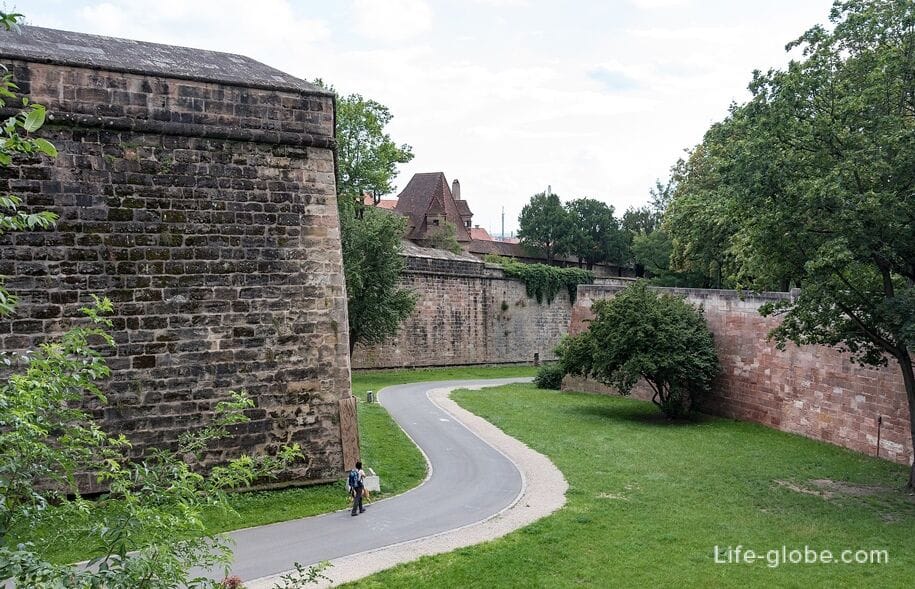
The upper bastion is located on the northwest side of the castle.
The lower Bastion is located to the South-West of the castle, near the square of Tiergartnerplatz (Tiergärtnertorplatz), where are also located: the gates tower and Targeterror (Tiergärtnertor), the house-Museum of Albrecht dürer (Albrecht-Dürer-Haus), a huge sculpture of a hare - "the Hare Durer" (Dürer-Hase Skulptur) and the house of Pilate (Pilatushaus). More about the square Tiergertnertorplatz...
Photo of Tiergartnertor Square, Tiergartnertor gate and tower
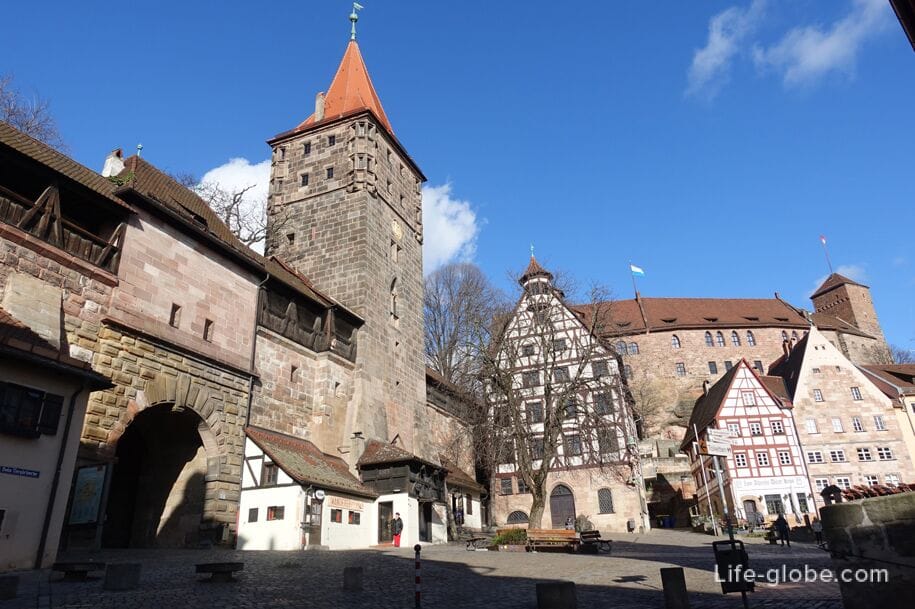
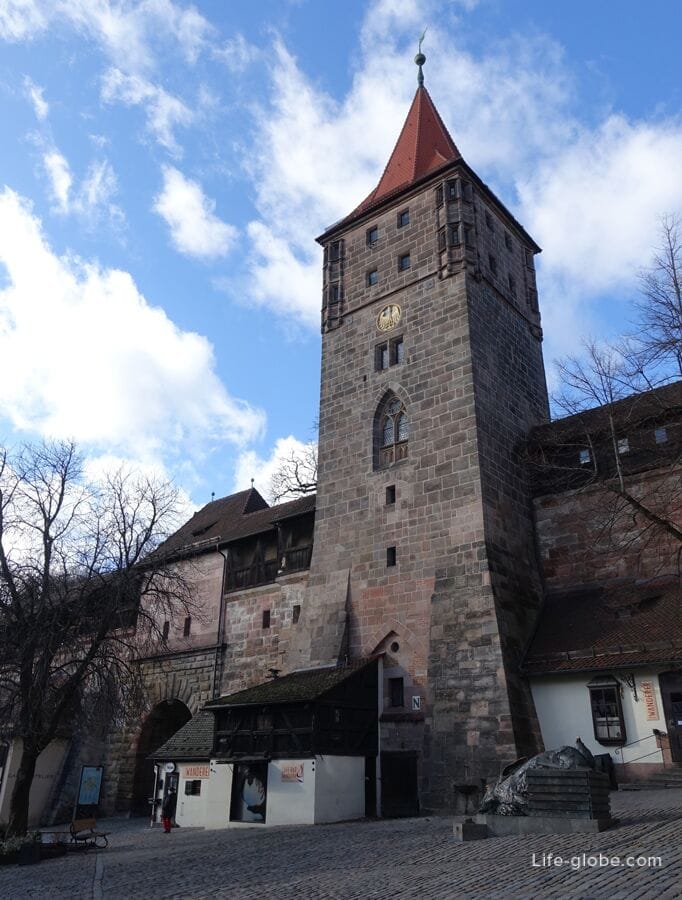
Casemates
In the Middle Ages, passages were laid under the Nuremberg fortress, bastions and defensive city wall (since 1545) and rooms were made - the so-called casemates (Kasematten).
During the history of the casemates were used for various purposes: as hidden passages, emergency exits, beer cellars (warehouses for beer) and even as a prison.
During the Second World War, in one of the dungeons of the fortress, Allied troops discovered a Nazi bunker-cache with art objects and valuables taken from the occupied territories.
Today there are guided tours of the casemates. Website: felsengaenge-nuernberg.
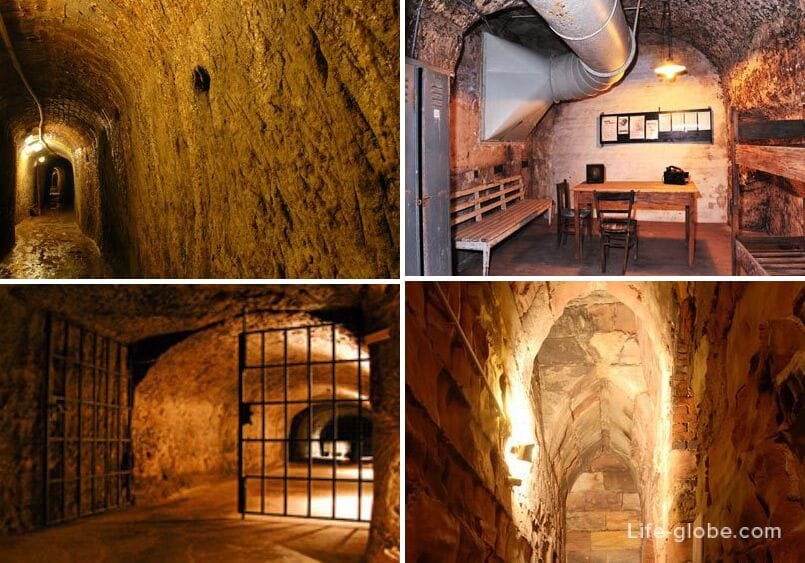
Practical information
Panoramic view of the Nuremberg Fortress
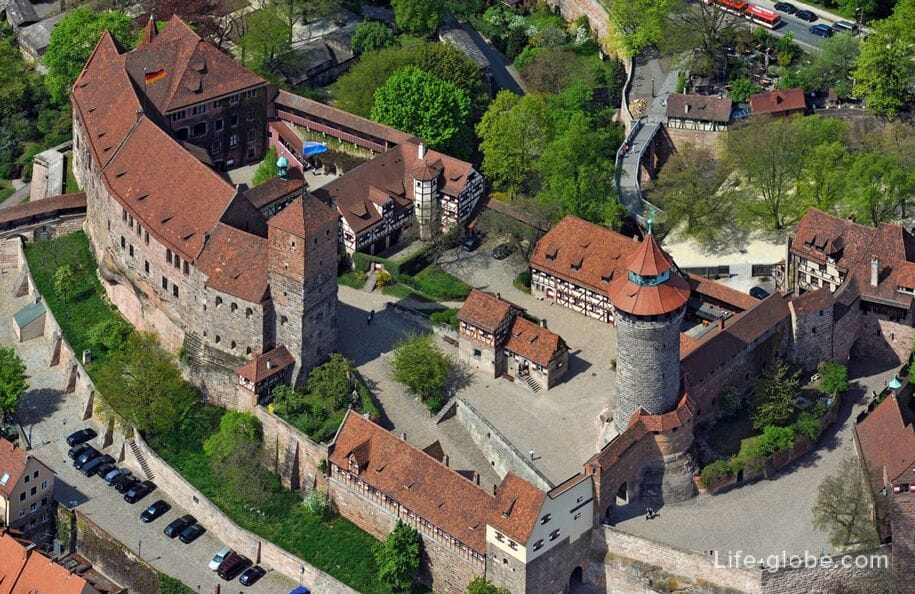
Map diagram of the Nuremberg Fortress
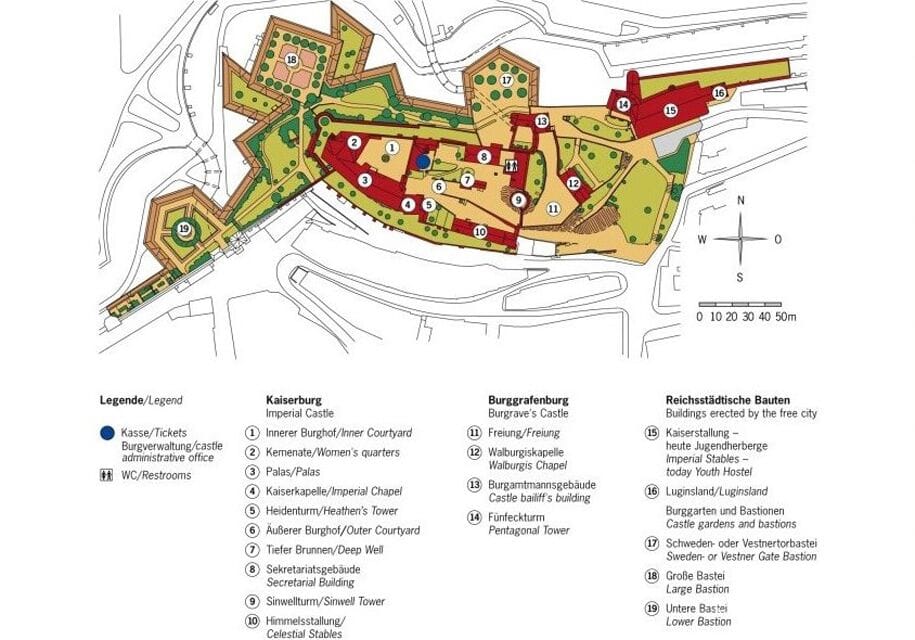
In the Nuremberg Fortress there are several types of tickets for visiting the castle facilities:
- double chapel, Imperial Castle Museum, deep well and Synwell observation Tower;
- double chapel and Imperial Castle Museum;
- deep well and Synwell lookout tower.
There is also a combined ticket to the Kaiserburg Palace + the Kadolzburg Fortress (Burg Cadolzburg), located in Kadolzburg, 18 kilometers from Nuremberg.
There are discounted tickets. Free entry with a Nuremberg CARD.
Nuremberg Castle is located on the northwestern outskirts of the historic old town of Nuremberg, at 17 Burg Street (Auf der Burg).
We recommend checking the opening hours of the castle and the cost of tickets immediately before visiting, on the official website.
Nuremberg Castle website:kaiserburg-nuernberg.
All accommodation facilities in Nuremberg, including in the city center and near the Nuremberg Fortress, can be viewed and booked here








